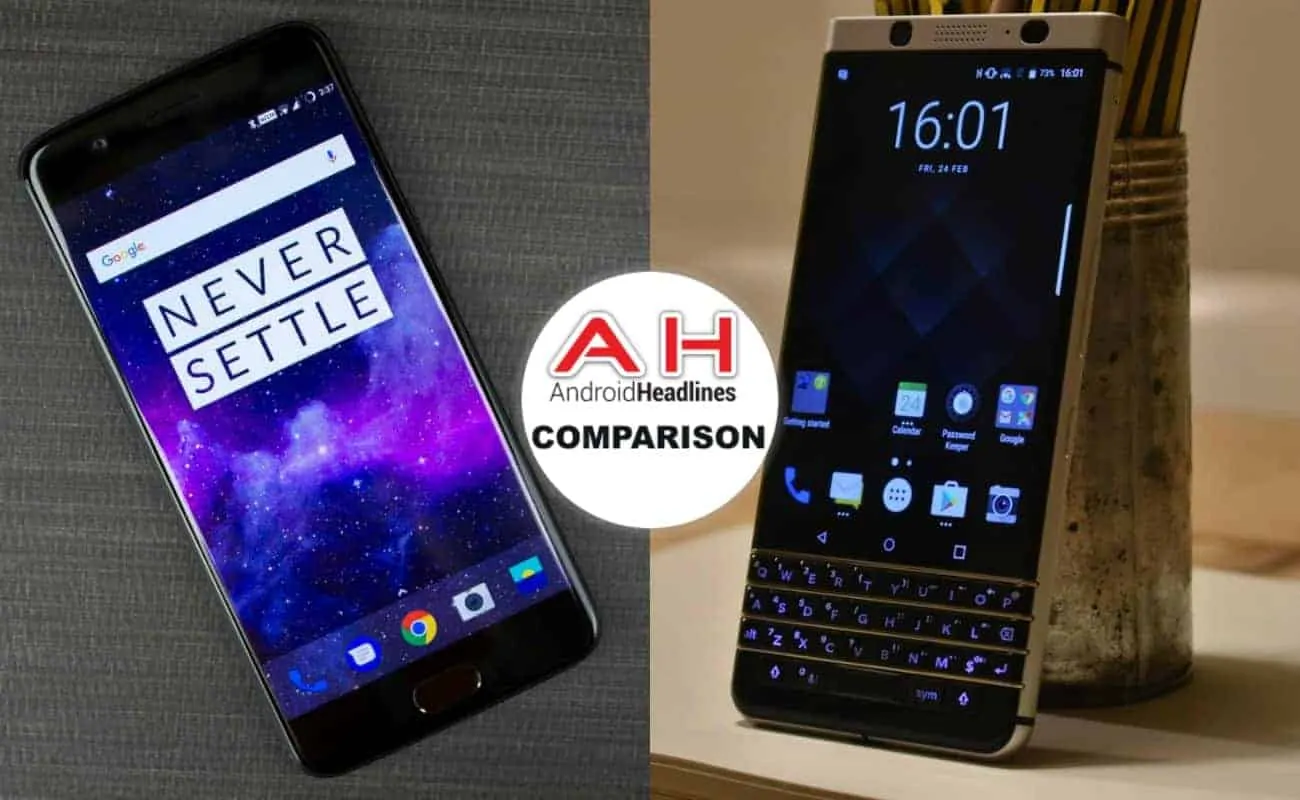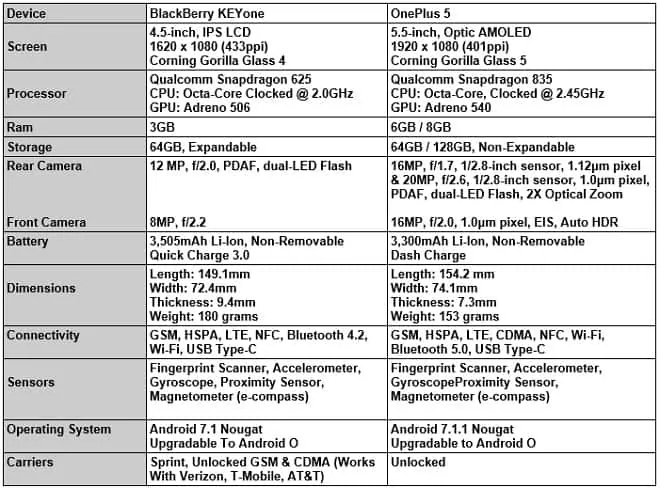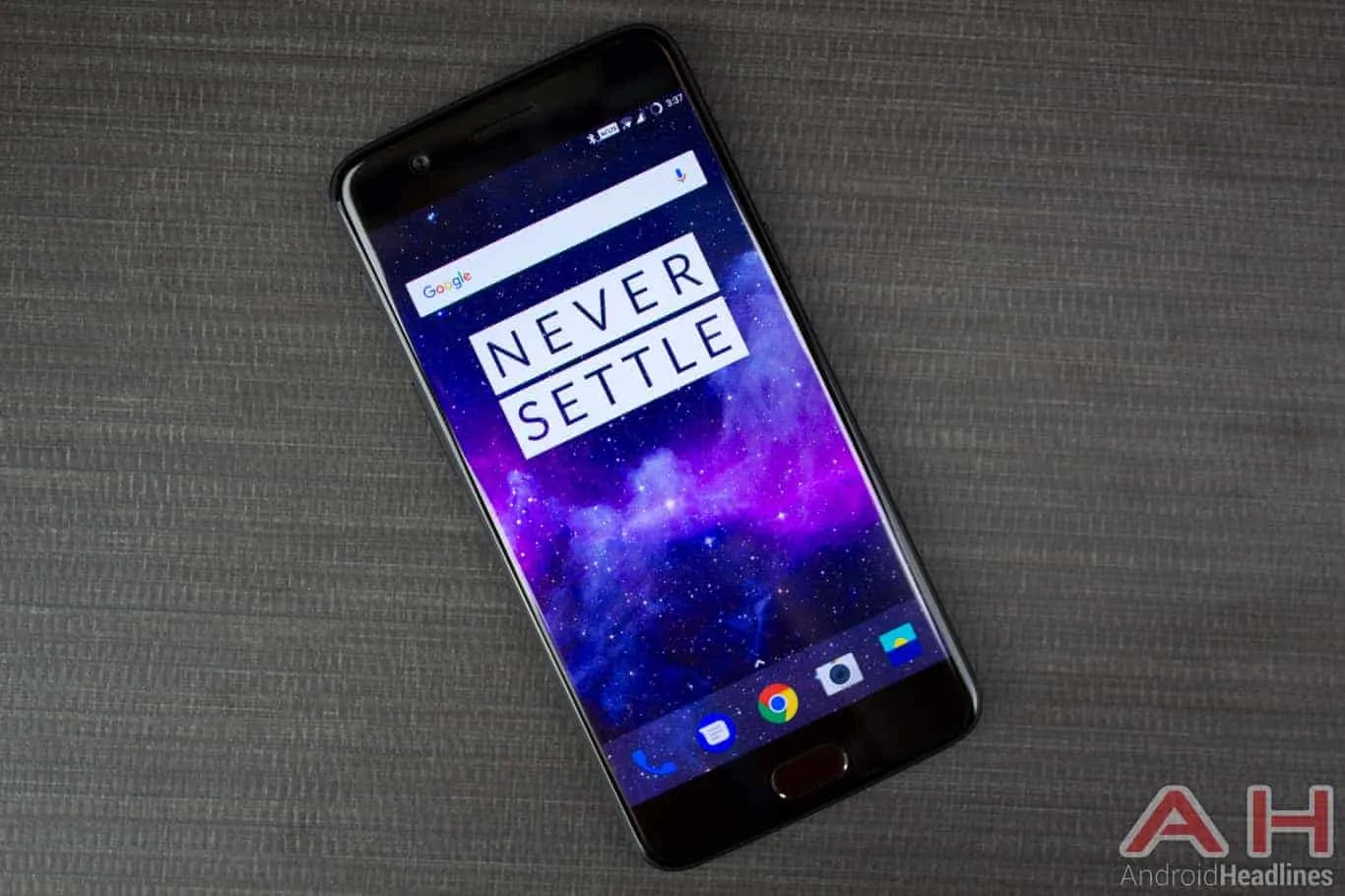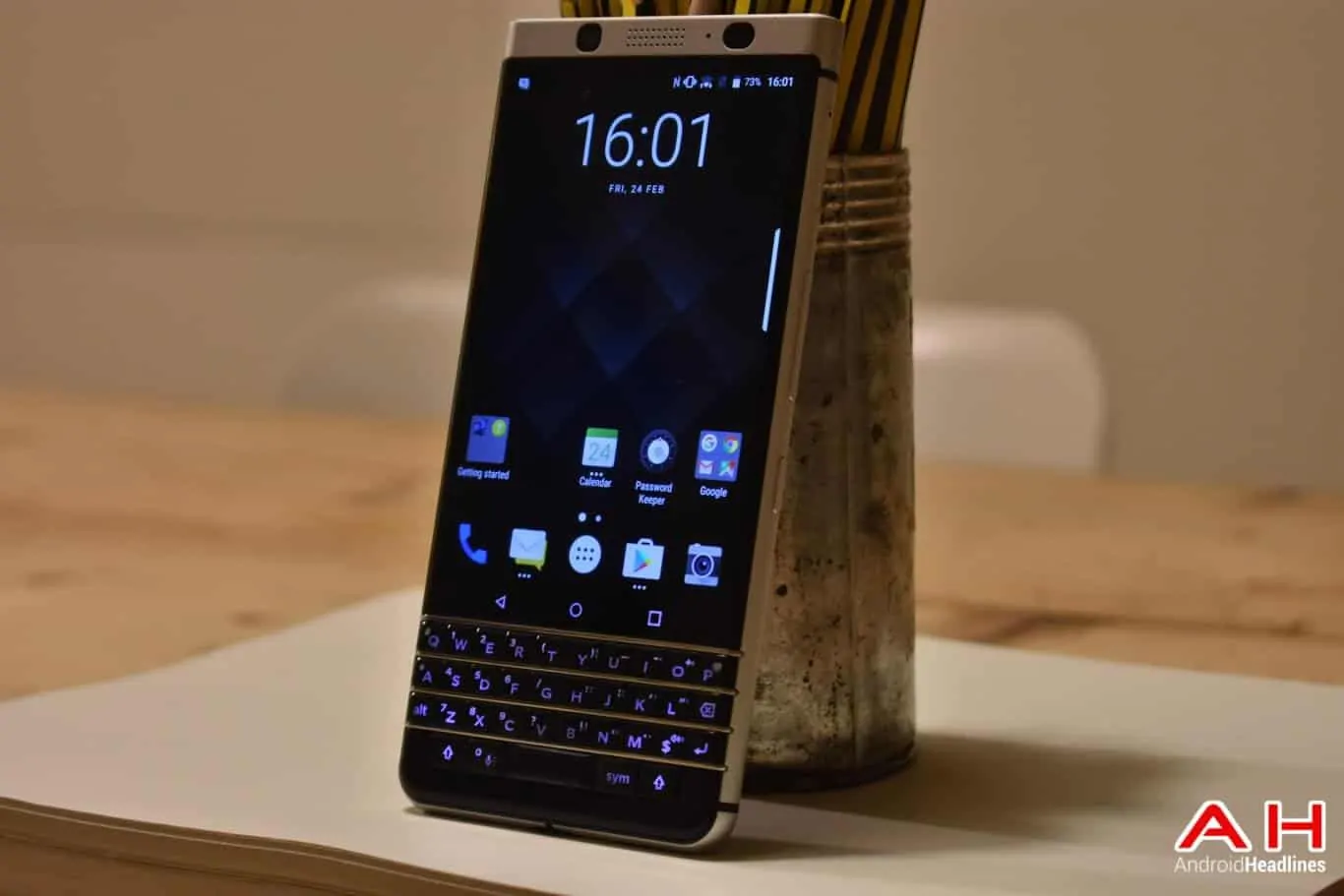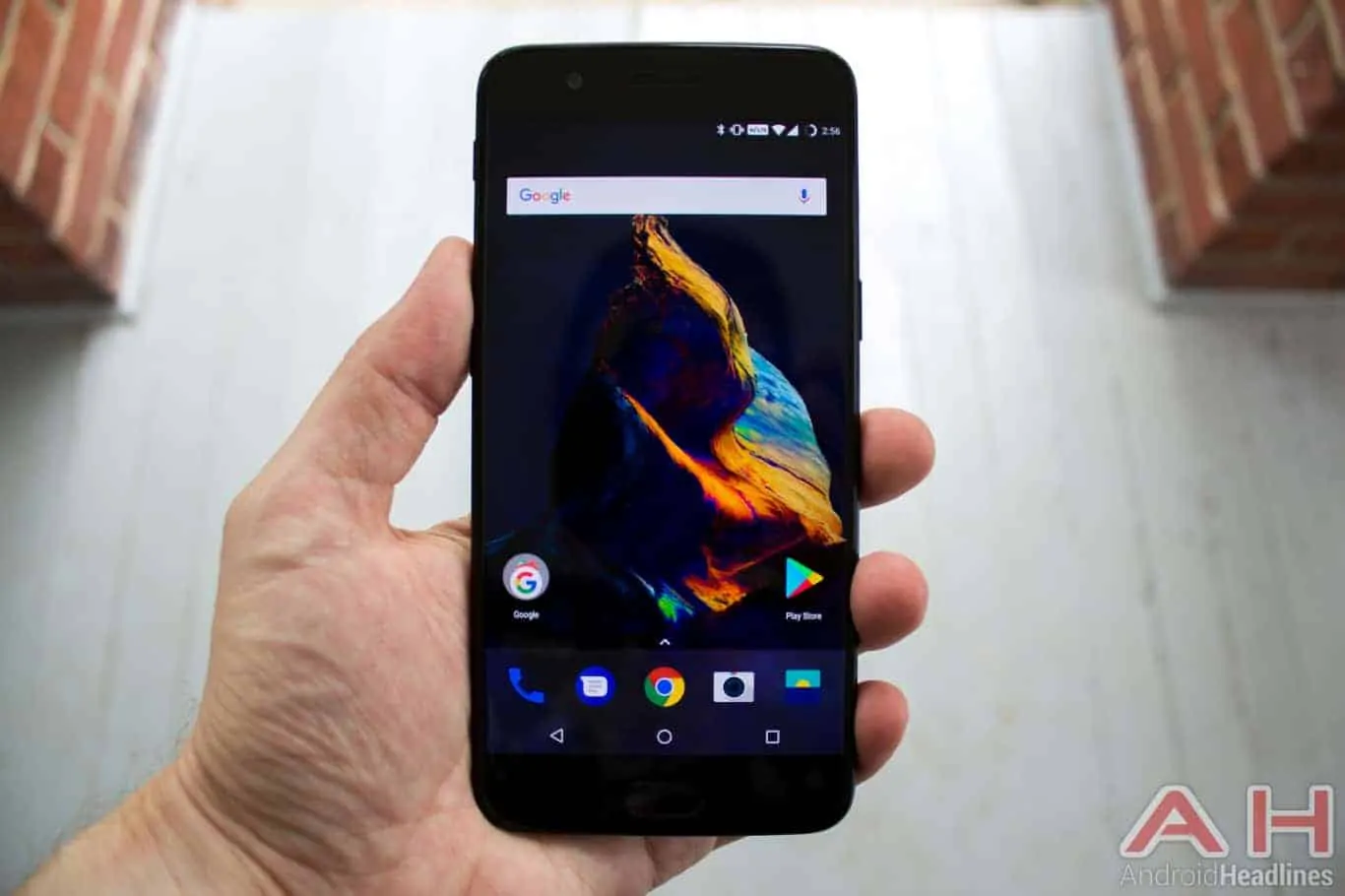Introduction
Today we compare the OnePlus 5 with the BlackBerry KEYone. Both devices were launched earlier this year and, have received widespread praise from the media for what they represent. While the former redefines the price-performance ratio, the latter is a classic example of the physical QWERTY keypad done right. The KEYone comes from the Canadian company that was once the global leader in smartphones, while the OnePlus 5 is the fifth-generation flagship from a Chinese firm that has managed to capture the attention of tech lovers with its attention-grabbing antics over the past few years. The two devices both have pretty much all the standard features you’d expect from premium Android smartphones circa 2017, but both include a few quirky but novel design elements that add some specific functionalities to them. Both have already cultivated a dedicated fan-following, so which one is right for you if you’re still sitting on the fence? We’ll try to find that out over the course of this comparison.
Specifications
OnePlus 5
In a few short years since the launch of its first smartphone in April 2014, OnePlus has already become a name to be reckoned with in the smartphone industry. The company’s flagship smartphones are some of the most sought-after Android handsets on the market, and its latest device is no exception. As a successor to the OnePlus 3T, the OnePlus 5 offers a flagship-quality device at a pocket-friendly price, making it a favorite with millions of buyers around the world. The device features a 5.5-inch 1080p Optic AMOLED screen that’s protected by Corning Gorilla Glass 5. It is powered by the Qualcomm Snapdragon 835 SoC that comes with an integrated 64-bit CPU with eight custom Kryo 280 cores, four of which are clocked at 2.45GHz and four others at 1.9GHz. There’s also an Adreno 540 GPU to take care of all the graphics processing needs. The device is offered in two different versions – one with 6GB of RAM and 64GB of internal storage, and another, with 8GB of RAM and 128GB of built-in storage.
As far as the cameras are concerned, OnePlus 5 sports a dual-camera module on the back. While one of the cameras incorporates a 16-megapixel Sony sensor with an f/1.7 lens, the other one comes with a 20-megapixel sensor that’s paired with an f/2.6 telephoto lens. The front-facing camera on the OnePlus 5 also comes with a 16-megapixel sensor, but with 1.0μm pixels and an f/2.0 lens. As far as videos are concerned, the front-facing camera can shoot 1080p videos at 30fps, while the rear-facing module can shoot 4K videos at 30fps and full HD videos at up to 120fps.
Connectivity features on the OnePlus 5 include Wi-Fi 802.11 a/b/g/n/ac, Wi-Fi Direct, DLNA and Bluetooth 5.0, alongside a USB Type-C port for charging and data syncing. The device also keeps the 3.5mm audio port for backwards compatibility with older headphones and audio systems. The device also supports GPS with A-GPS and GLONASS, while sensors include a fingerprint scanner, an NFC chip, an accelerometer, a gyroscope, a proximity sensor and a magnetometer. The OnePlus 5 comes with Android 7.1.1 Nougat pre-installed in the form of Oxygen OS, and carries a non-removable 3,300mAh battery. The device measures 152.2mm in length, 74.1mm in width and 7.3mm in thickness while weighing in at 153 grams.
BlackBerry KEYone
The BlackBerry KEYone comes with an all-metal construction with curved edges on all four sides and a soft-touch rubberized back for better grip. It features a relatively-small 4.5-inch IPS LCD display to accommodate the main attraction of the device – the physical QWERTY keypad. The screen has an odd 3:2 aspect ratio and, comes with a display resolution of 1620 x 1080 pixels. The device is powered by the Snapdragon 625 SoC, which comes with an integrated octa-core Cortex-A53 CPU clocked at 2.0GHz, and an Adreno 506 GPU clocked at 650MHz. The KEYone uses 3GB of DDR4 RAM and 32GB of built-in storage that is expandable via a microSD card of up to 256GB in capacity. The battery on the device is a non-removable 3,505mAh Li-Ion unit with support for Qualcomm’s Quick Charge 3.0. On the software side of things, the device runs an almost pure version of Android 7.1 Nougat out-of-the-box.
The smartphone uses the exact same 12-megapixel sensor that can be found on the Google Pixel and the Pixel XL. It has an f/2.0 aperture, phase detection auto-focus (PDAF) and a dual-tone LED flash. The front-facing camera comes with an 8-megapixel sensor and an f/2.2 lens.The phone also comes with a customizable ‘Convenience Key’ below the volume rocker on the right side, just like the DTEK50 and the DTEK60 before it. The device also ships with a fingerprint scanner that’s embedded in the space bar of the physical keypad. The phone measures 149.1mm in length. 72.4mm in width and 9.4mm in thickness, while weighing in at 180 grams.
Any discussion on the BlackBerry KEYone remains incomplete without deliberating on probably the most important part of the package – the physical QWERTY keypad. It is not for everybody, but it adds a novelty factor to the device and is definitely its USP in an era when smartphone vendors have moved away from physical keypads to concentrate almost entirely on the full-touchscreen form-factor. While some will still view the keypad as the symbol of a true BlackBerry smartphone, others will summarily dismiss it as a relic of the past that has outlived its utility. Whichever camp you’re in, the fact still remains that there was a strong demand from a large section of the BlackBerry community for the company to get back to its QWERTY roots, and that’s exactly what this device managed to do. After less-than-impressive attempts at incorporating a physical QWERTY keyboard in devices like the PRIV, the KEYone is a classic example of the QWERTY keypad done right.
And The Winner Is …
The Final Word
To be completely honest, the BlackBerry KEYone and the OnePlus 5 are targeted at completely different sets of buyers, so it probably isn’t entirely fair to compare them against one another. On the other hand, the devices are priced fairly similarly, so it makes perfect sense to pit them against each other to see which one deserves your hard-earned money. Both devices have their own pros and cons, but the only reason the OnePlus 5 pips the BlackBerry to the post in our comparison, is because in spite of its quirks, it still appeals to a much larger target audience than its competitor. The OnePlus 5 is a nice, well-rounded smartphone that isn’t completely without its flaws, but is certainly worth buying if you want a performance-oriented high-spec device without paying an arm and a leg for it. On the other hand, the KEYone comes with an almost-perfect implementation of a physical QWERTY keyboard on an Android smartphone, and is a must-buy for anyone feeling nostalgic about the good ol’ BlackBerrys.
Buy The OnePlus 5 Buy The BlackBerry KEYone

